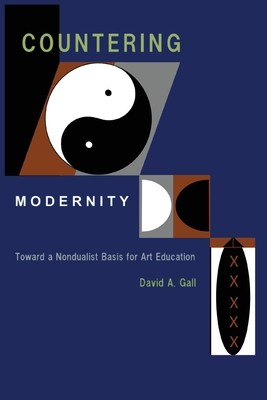
- We will send in 10–14 business days.
- Author: David a Gall
- Publisher: Teneo Press
- ISBN-10: 1934844233
- ISBN-13: 9781934844236
- Format: 15.2 x 22.9 x 1.7 cm, minkšti viršeliai
- Language: English
- SAVE -10% with code: EXTRA
Reviews
Description
This book focuses on the competing legacies of modernity/modernism and countermodernity/countermodernism. They are regarded, however, as tendencies, hybridities, and intensities rather than purities. More diagnostic than curative, this book uncovers the legacies of the distortion of difference, or centrism, in modernity and modernism, exercised especially in Euro-Western history, and legacies of countermodern tendencies that opposed them. Modernist distortion of difference was profoundly expressed in the reduction of black human beings to the status of objects in the institution of slavery. It was also expressed in the elevation of particular objects to the status of cultural icons possessed of subjectivity, through the peculiar definition given to the concept "art" in emerging imperial nationalist and capitalist global culture. In historical discourse distorted difference was institutionalized when the term "modern," implying present superior to the past, was appropriated to refer exclusively to a specific historic period and culture, (generally) eighteenth to the first half of twentieth century European history and culture. The term postmodern attests to success of the appropriation, to magnitude of its conceit, and to the subtle way it is interwoven with countermodern currents. Discursive insistence on modernity's plurality and relativity, seeks to redress the imbalanced through recognition of different modernities, but distributes modernity's conceit.
The aims of this text, therefore, are: to review modernity and modernism from nondualist perspectives; to disentangle dualist modernist tendencies from nondualist countermodernist tendencies and to trace and distinguish their threads interwoven in imperial and colonial histories and in art discourse, and finally to present a case where art objects are the source of nondualist aesthetic, and examples of countermodern response to the challenges of modernist conceit.
EXTRA 10 % discount with code: EXTRA
The promotion ends in 22d.04:10:54
The discount code is valid when purchasing from 10 €. Discounts do not stack.
- Author: David a Gall
- Publisher: Teneo Press
- ISBN-10: 1934844233
- ISBN-13: 9781934844236
- Format: 15.2 x 22.9 x 1.7 cm, minkšti viršeliai
- Language: English English
This book focuses on the competing legacies of modernity/modernism and countermodernity/countermodernism. They are regarded, however, as tendencies, hybridities, and intensities rather than purities. More diagnostic than curative, this book uncovers the legacies of the distortion of difference, or centrism, in modernity and modernism, exercised especially in Euro-Western history, and legacies of countermodern tendencies that opposed them. Modernist distortion of difference was profoundly expressed in the reduction of black human beings to the status of objects in the institution of slavery. It was also expressed in the elevation of particular objects to the status of cultural icons possessed of subjectivity, through the peculiar definition given to the concept "art" in emerging imperial nationalist and capitalist global culture. In historical discourse distorted difference was institutionalized when the term "modern," implying present superior to the past, was appropriated to refer exclusively to a specific historic period and culture, (generally) eighteenth to the first half of twentieth century European history and culture. The term postmodern attests to success of the appropriation, to magnitude of its conceit, and to the subtle way it is interwoven with countermodern currents. Discursive insistence on modernity's plurality and relativity, seeks to redress the imbalanced through recognition of different modernities, but distributes modernity's conceit.
The aims of this text, therefore, are: to review modernity and modernism from nondualist perspectives; to disentangle dualist modernist tendencies from nondualist countermodernist tendencies and to trace and distinguish their threads interwoven in imperial and colonial histories and in art discourse, and finally to present a case where art objects are the source of nondualist aesthetic, and examples of countermodern response to the challenges of modernist conceit.


Reviews